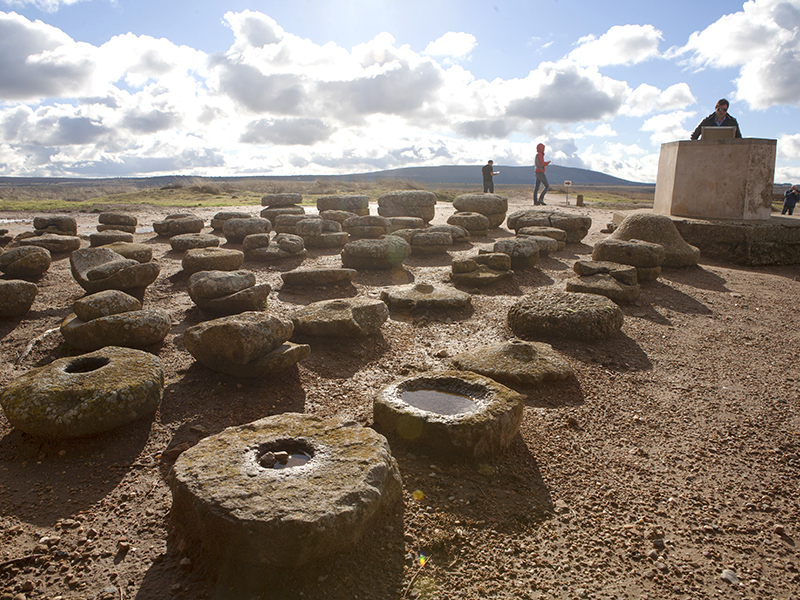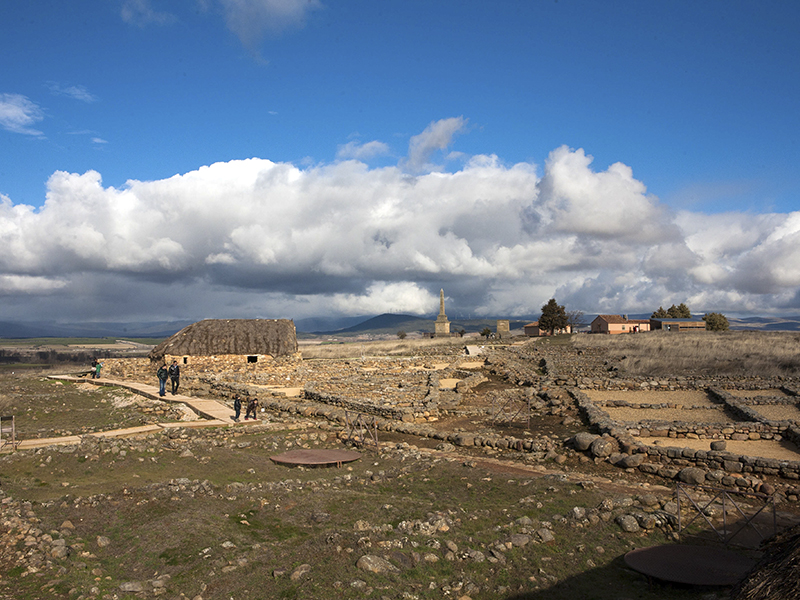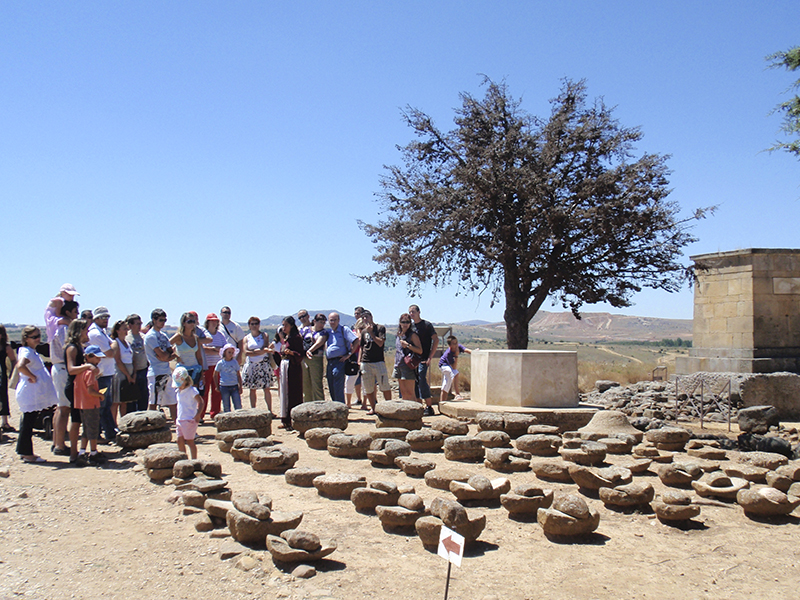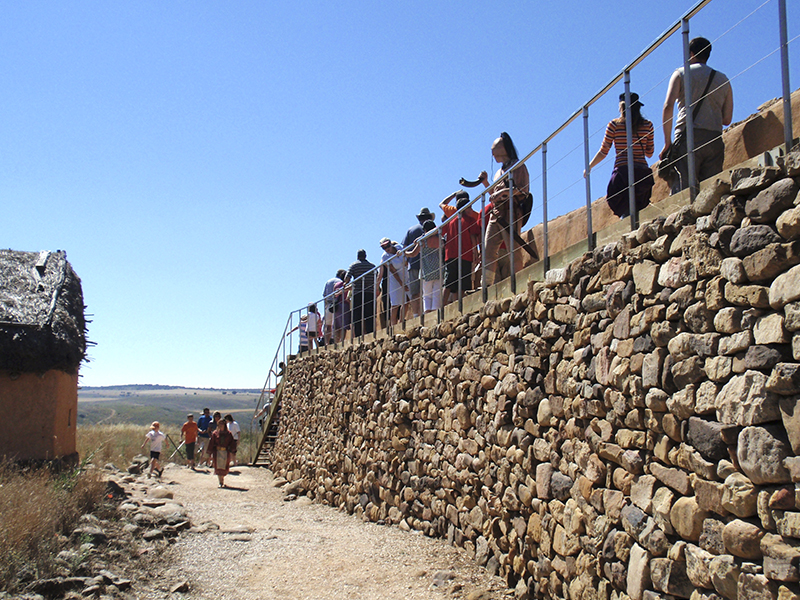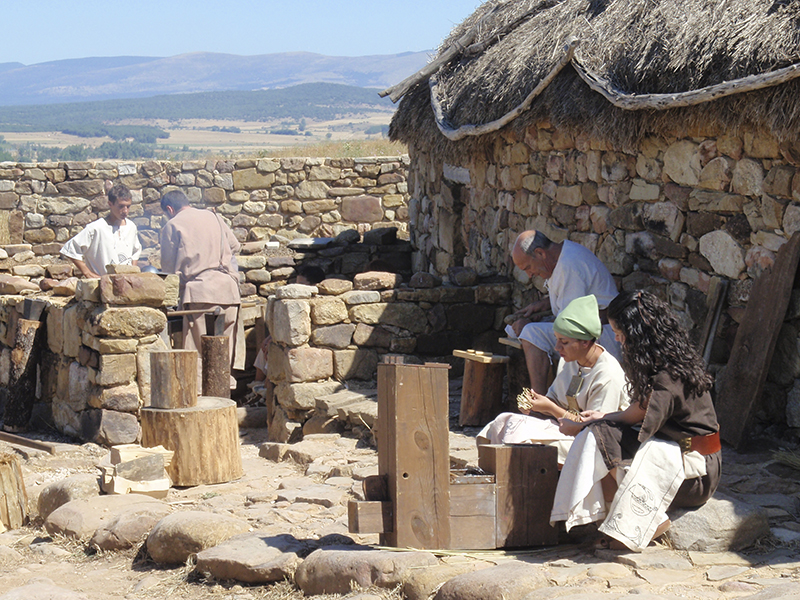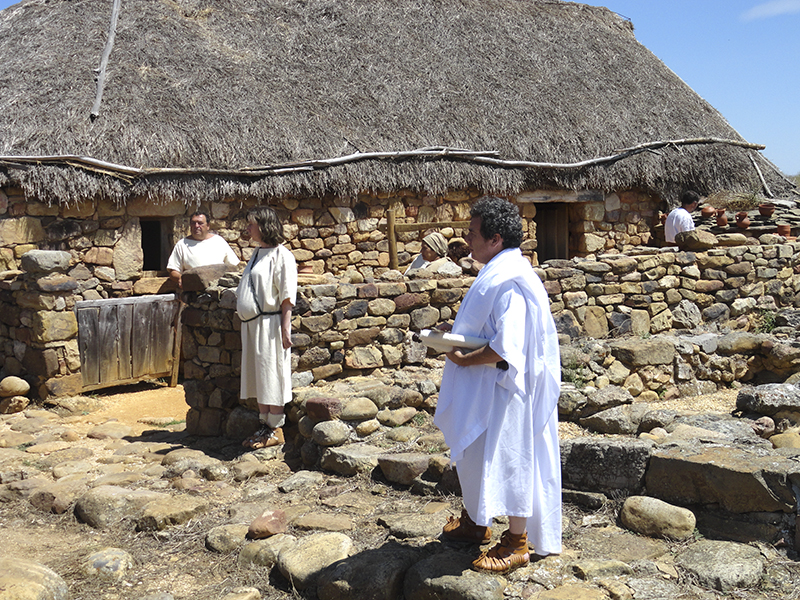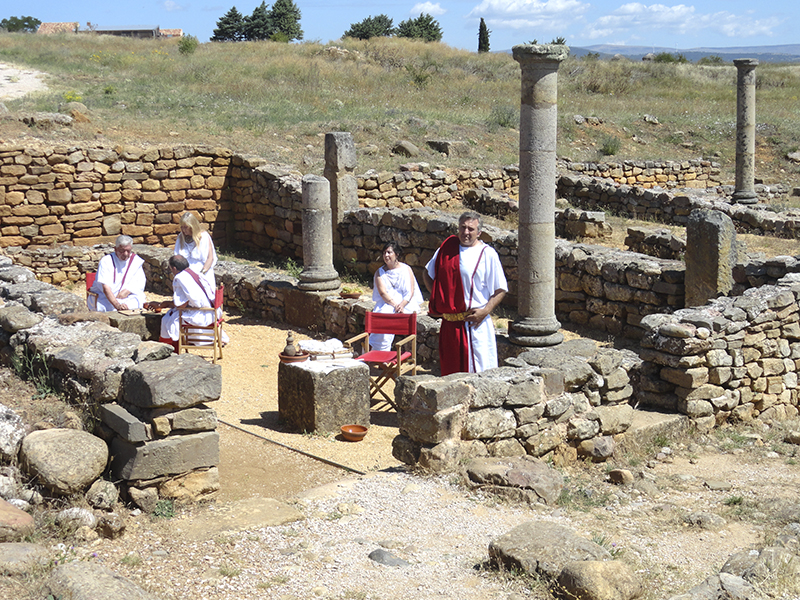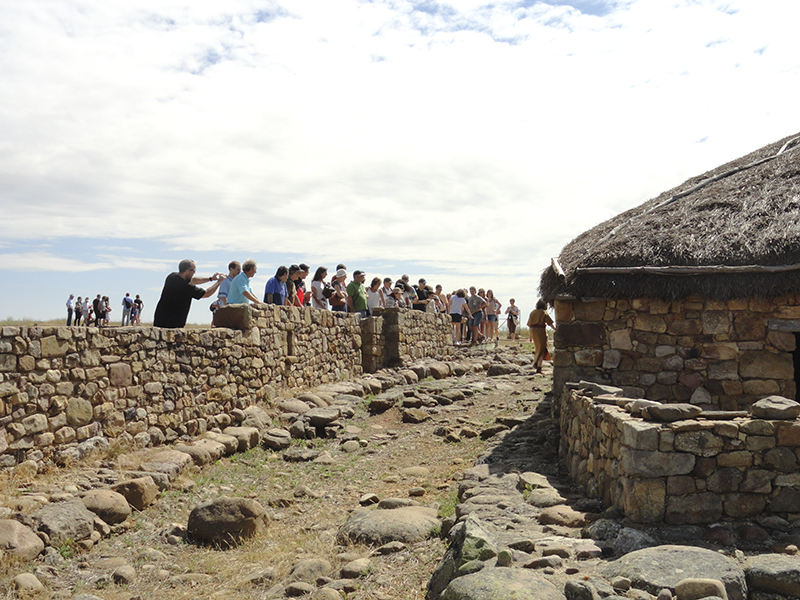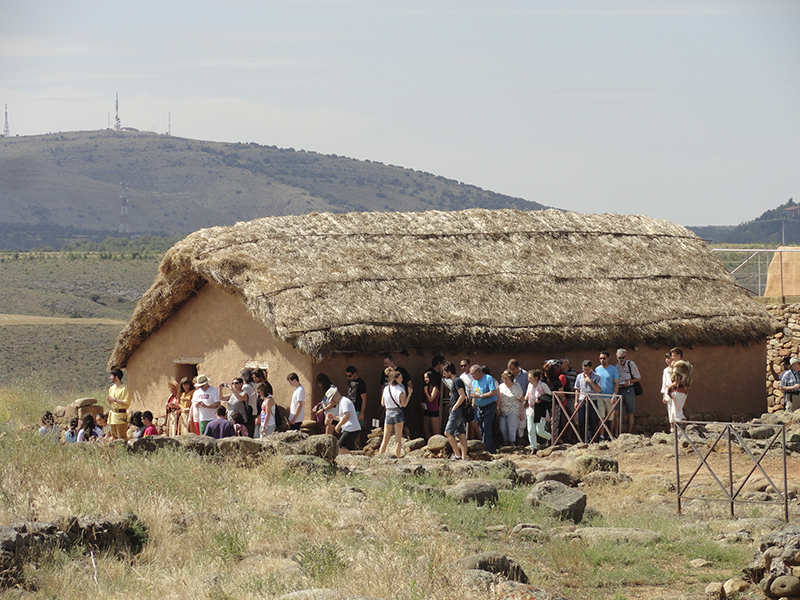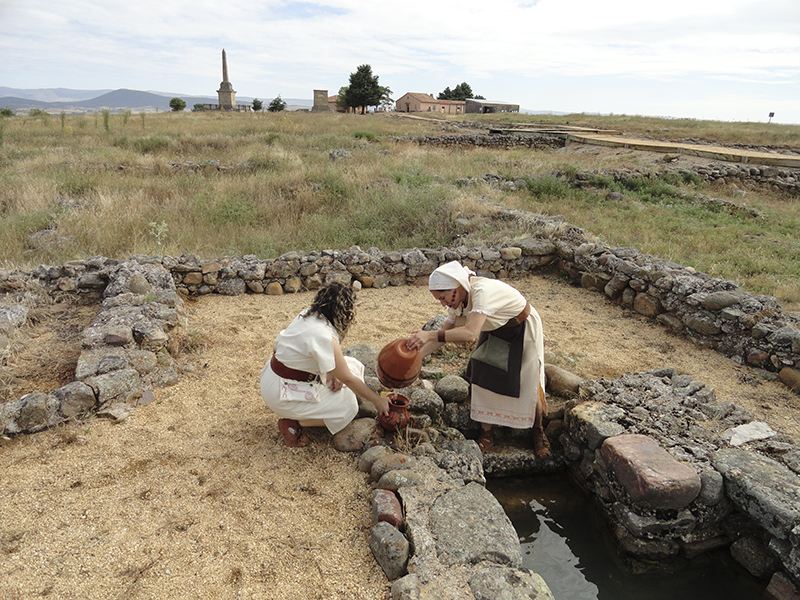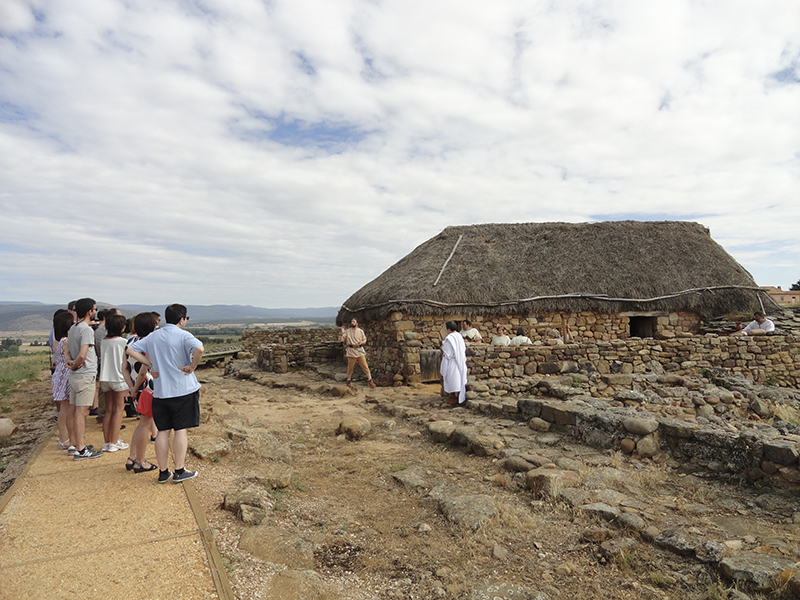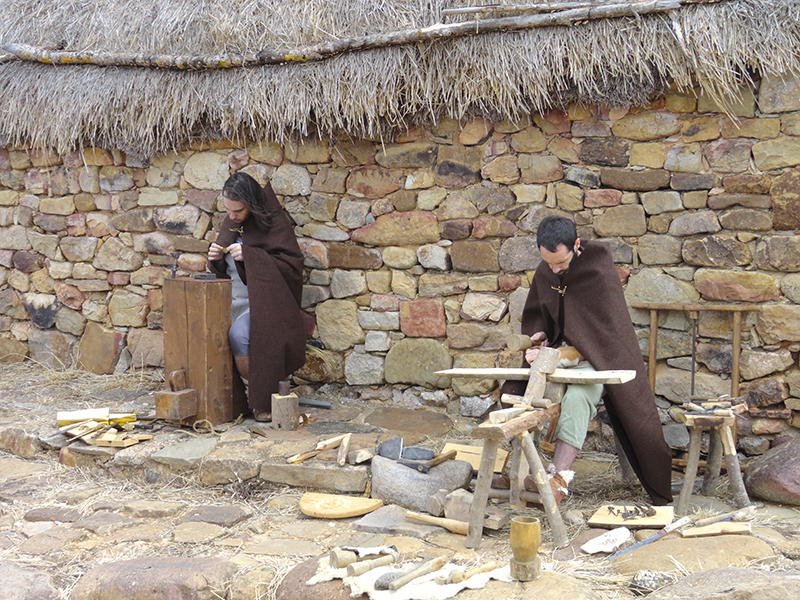NUMANCIA
NOT ONLY RUINS
Speaking of Numancia we must point out that not only is an archaeological site. It is an example of obstinacy, strength and struggle of people for their rights and freedom. Already in those days the same Roman writers - thanks to all that mentioned they became the most nombrada- celtibérica city were the ones who raised the performance of a heroic numantinos giving it a universal projection. This explains that in such situations at the present time, anywhere in the world can be remembered Numancia symbol, as in sport and especially in football where the defense and frequently cited stubborn resistance.
The "heroic city" covers the extensive and high hill of La Muela de Garray, from which dominates a vast plain bounded by high elevations of the Iberian System. This strategic position is reinforced by the domain that plays on the passage of Duero River, where the roads converge, crossing the Iberian formations, joined the Ebro valley with the Alto Douro.
Numancia archaeological site is the largest source of data on the celtibérico apoortado world, being the most extensively excavated, which has recently been reinforced with the discovery and excavation of the necropolis.
To all this we must add that no other celtibérica city has provided neither so large nor so valuable painted ceramics, which combine their aesthetic and artistic values, providing valuable information about aspects of life, clothing, weapons, costumes, masks, dances or rituals and customs of the Celts, expressing original and unique features.
The most numerous are red mud and adorned with black paintings, made with iron oxide. The geometric themes are embodied predominance of straight-line crosses areas alternating with "swastikas" and blades, checkered, spirals, circles and concentric semicircles that mix and alternate with full human figures or just head and neck; as well as animals that are rarely scenes, among them birds, fish and once the bull, the sun and the moon, etc ...
Currently you can see the network of streets, the remains of some homes or reconstruction of paths celtíbera and Roman houses that make your visit a journey back in time.
HISTORY
The first traces of human evidence in the area are about 4500-3600 years ago (late Chalcolithic and early Bronze Age). There are over a hundred stone objects, a carved: retouched blades or knives, and other Buffed: axes, adzes and some chisels. Along with this the first stone tool appear metallic components, copper, and javelin tips and leaves dagger tongue are usually found in the regalia of the interments with bell-shaped ceramics and villages. We are talking about small groups with a small number of basic huts and nomadic peoples own construction. Almost a thousand years later no trace of new settlements around the ninth century B.C. This level of occupation, is characterized by hand-made ceramics. In addition, it has located a small groove, which should serve to support a fence, which serve to define and protect a temporary settlement until the seventh century B.C. So far there are no significant vestiges that allow to speak of a continued occupation from now until the beginning of the first celtibérica city, which had its origin advanced the third century B.C.
THE CITY CELTIBERIAN
No one truly knows the date of its foundation, but the remains found in the necropolis show that took place in an advanced stage of the third century and beginning of the second century B.C. To highlight more the heroic feat of numantino people, some Roman historians spoke of the absence of walls, but archaeological studies have revealed the existence of a walled enclosure, as claimed Appian, in his texts left evidence that the perimeter of the wall was 24 stadiums. The city, destroyed by Scipio, occupy no more than 8 hectares and although it is poorly understood its urban layout, it is known that consisted of houses with rectangular shape, in alignment to the wall and separated by a street round, and which formed the core were arranged in groups. It was a city-state because, like the rest of Celtiberian cities, controlled politically and administratively territory with their towns and villages because, as evidence, are themselves numantinos those who go to Rome to establish peace talks.
As for the population which had Numancia, according to data on the number of houses and the space of the city, it is estimated that at that time would be around 2000 inhabitants.
The devastation of Numancia in 133 B.C. and control Celtiberia Rome, did not end the revolution. The abuse of the Roman Empire caused successive uprisings celtíberos and Lusitanian in 114 B.C. and later, in 98 A.C. .; After the Celtiberian peoples benefited from the civil war in Rome between supporters of Mario and Sila, siding Sertorio (follower of Mario), who relied on them unleashing wars known as sertorianas (82-72 BC) . Pompeyo, governor of Nearer Spain, attacked in 76 B.C. Numantia and Uxama (Osma), among other cities, tearing Sertorio Celtiberia control.
LA ROMANA CITY
The plane analysis of ancient excavations of Numancia can narrow the siege of this city, especially in the south, reflected in a widening semicircular, parallel to the former town, corresponding to the closing of the wall, which is known part of its course, largely because it was obscured by the construction of the later Roman city. A semicircular street with sidewalks stream and articulates the perimeter of the ancient city with this most recent. The surface invaded approaches 9 ha., Ie, is somewhat larger than the old city. This second city is related to the base of the urban layout of Numancia, which will be adjusted by far the most modern Roman imperial city. The streets were quite irregular and were paved. In the stream large rough stones were arranged without any regularity, for use as passage from one sidewalk to another.
And subsequently extended the southern part of the settlement, the city reaches the category of municipium extension extending about 22 hectares, including the neighborhoods of the hillside. The Roman influence is evident in the city: mapping the more regular streets, better jobs maintained stone buildings, paved, public buildings, baths, temples ... ..
From the third century the decline of life in the city, which begins to lose population to reach its disappearance around the second half of the fourth century, mainly due to the crisis in urban economy and the Empire, it is noted that results in the abandonment of cities in favor of rural settlements.
ITINERARY
Within the site we can see the structure of the city, the layout of its streets and some remains that show what life was like in place.
Among the highlights are the remains of the wall and north gate, fence of Scipio, small Roman baths, public building with its drain, the water tank with stairs, the Roman house, the celtibérica house, the house with arcaded courtyard, hand mills, the neighborhood south ....
| Hours: Tuesday to SaturdayJanuary and February / November and December: Mornings: 10:00 to 14:00 h. / Evenings: 16:00 to 18:00 h.March to May and October: Mornings 10:00 to 14:00 h. / Evenings 16:00 to 19:00.
June to September: 10:00 to 14:00 Mornings / Evenings 16:00 to 20:00 Closed on Monday |
|
| GENERAL: 5 € Adults 18 to 65 years. |
Reduced: 3 €
Between 8 and 17 years included
Groups of 15 or more people (only with advance booking)
Large families
Students and youth card
Over 65s, retirees, pensioners and members of the Club of the 65
Handicaps from 33%
Members of Associations of Friends of Museums of Castilla y Leon and members of ICOM Standing
Free: 0 €
Children up to 7 years included
Teachers
Official Tourist Guides of Castilla and Leon Members accredited by the Concierge of Culture and Tourism official visits.
On April 23 (Community CyL), 9 May (Europe Day), October 12 and December 6 (Constitution).
SPECIAL GROUP VISITS: 120 €
homogeneous group of visitors made up of up to 54 people, as groups, associations, schools, university groups, etc ...![]() Related videos
Related videos![]() Download info
Download info
** Advance purchase individual tickets or small groups can be done on-line http://numanciaonline.es/#visitarnumancia
Reservations for large groups visits must specify the date and time via email at: [email protected] or by phone at 650 709 671.
More info at: www.numanciasoria.es
GUIDED VISITS
January to May / October-December
Tuesday to Saturday: 11:00, 12:30 and 16:30
Sundays and holidays: 11:00 and 12:30
June 1 to September 30
Tuesday to Saturday: 11:00, 12:30, 16:30 and 18:00
Sundays and holidays: 11:00 and 12:30








